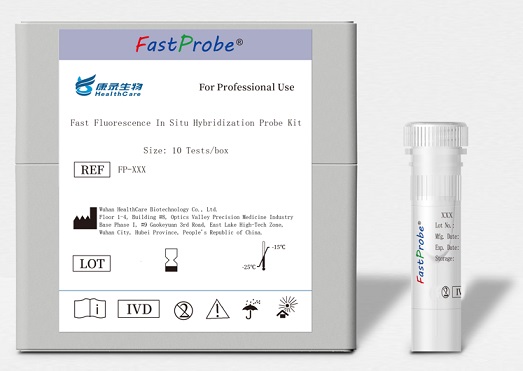IVD - FP391 RBM10/TFE3 Gene Fusion Probe Detection Kit

Cat.# FP-391: RBM10/TFE3 Gene Fusion Probe Detection Kit
[Overview]
This gene encodes a basic helix-loop-helix domain-containing transcription factor that binds MUE3-type E-box sequences in the promoter of genes. The encoded protein promotes the expression of genes downstream of transforming growth factor beta (TGF-beta) signaling. This gene may be involved in chromosomal translocations in renal cell carcinomas and other cancers, resulting in the production of fusion proteins. Translocation partners include PRCC (papillary renal cell carcinoma), NONO (non-POU domain containing, octamer-binding), and ASPSCR1 (alveolar soft part sarcoma chromosome region, candidate 1), among other genes. Alternative splicing results in multiple transcript variants. [provided by RefSeq, Aug 2013].
The accurate diagnosis of Xp11-translocation renal cell carcinoma (RCC) in adults is challenging. TFE3 (located on chromosome X) fuses with a partner gene generally located on another chromosome. In rare cases TFE3 may fuse with a neighboring gene: RBM10. Because TFE3 false-positive immunostaining is a common pitfall in many laboratories, demonstration of the chromosomal rearrangement is required in order to ascertain the diagnosis.
[Download] RBM10/TFE3 Gene Fusion Probe Instructions
[Download MSDS] MSDS

